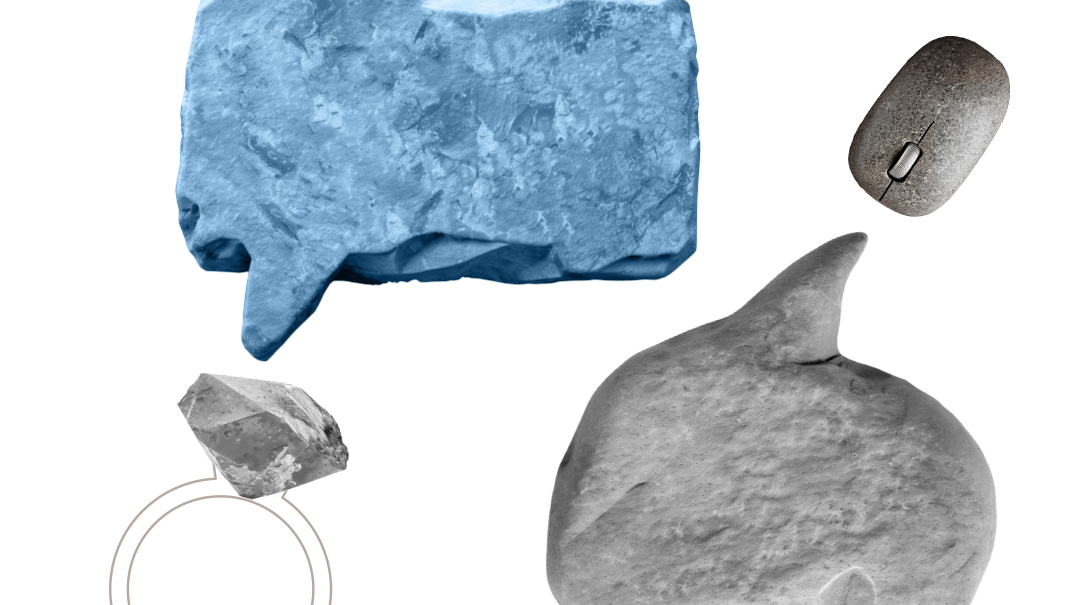Habits That Stick
| April 14, 2021Little changes can create big shifts. And taking on new habits is easier than you think. The core principles of best seller Atomic Habits — and how they played out in real life

“Homemakers can be divided into two types: the structure cravers and the ‘flow-ers.’ ” I was listening to Yael Wiesner, my homemaking guru, on a teleconference class when she shared that insight.
Yael went on to explain that while this isn’t a blanket description, and people operate differently at different times and in different settings, generally speaking, structure cravers are those with lists and schedules, the type who know exactly what needs to get done each day. They prepare clothing and lunches for their kids the night before school so the morning routine goes without a hitch. Their kids eat supper and are bathed and bedded down at the same time each night.
“Flow-ers” are a different breed. They go with the flow. Full of good intentions, they’ll plan to bake a cake, then see they’ve run out of oil, so they’ll pack up their kids and go to the grocery store. Then they’ll bump into an old friend and decide to schmooze in the park for a while. By the time they get home, it’s suppertime, but there’s no sign of supper — just the mixer, some flour, cracked eggs, and spilled sugar on the counter.
Help!
Forming good habits, Yael says, is crucial for “flow-ers.” She recommends that “flow-ers” integrate one or two new habits in their lives each month. Examples she gave included not leaving the house before the kitchen table is clear, or checking by 10 a.m. that they have all the ingredients they need to make supper.
There was no doubt in my mind that I’m a “flow-er.” I consoled myself with the fact that (henceforth called) flowers sound much more poetic than structure cravers. We’re also more creative and easygoing than stiff structure cravers (the truth being, of course, that I long to run my home as easily and efficiently as structure cravers run theirs.)
In my quest to follow Yael’s advice, I came across a book called Atomic Habits by James Clear. I wish I could say this book changed my life and I’ve become a structure craver, and never need to look for lost shoes or do last-minute grocery runs. But it takes a lifetime to break a middah, says Rav Yisrael Salanter ztz”l, so a perfectly neat and organized home won’t be happening in mine.
But the book definitely helped me make significant changes in my life, and I’m here to share some of the book’s tips with you.
An Issue of Identity
Mr. Clear advises us that before choosing our habits, we should first establish an identity for ourselves. Instead of saying, “I’d like to be more organized,” or “I want to start eating healthy food,” reframe that to “I’m a person who runs an organized home” or “I’m someone who eats healthy food.”
Once you have an identity, says Mr. Clear, choose several habits that will reinforce that identity. Think: How would a person with that identity act? Every time you act like your new identity, you’re proving to yourself that you actually are that identity.
It’s not so much our goals that matter, says Mr. Clear, as the set of systems that led us to those goals. Imagine you tell yourself, “I’m an erliche person.” How does an erliche person act? Perhaps she davens more, learns halachah or mussar with a study partner several times a week, makes a daily cheshbon hanefesh, etc.
The next step is translate this into specific habits: I’ll say one kapitel of Tehillim each day, learn with a study partner twice a week, and each Motzaei Shabbos make a list of things I want to improve.
Here Mr. Clear gives us “The Four Laws of Behavior Change” to help us shape our habits:
1. Make It Obvious
The easiest way of making a habit obvious is by writing it down, and posting it in a place where you can see it — your bathroom mirror, fridge door, or wallet. I’ve found the Habit Tracker template in the book invaluable for this.
Another trick is implementing “Habit Stackers.” If you already have habits in place, (and we all do, even the most flowery among us. We all brush our teeth daily!) we should “stack” — i.e., connect a new habit to our current one. After I diaper the baby, I’ll wipe down the bathroom sink. After I switch off all the downstairs lights at night, I’ll place all phones in their chargers.
Other ways of making habits obvious: Put them “in your face” — keep a water-filled pitcher out on the counter if you want to start drinking more water, keep the relevant sefer on your night table if you’d like to start learning two halachos of shemiras halashon each day.
Employ the inverse of this rule to break a bad habit; hide those rugelach in a double-wrapped and knotted bag deep in the freezer if you want to stop snacking on a rugelah with your morning coffee. Zip your laptop in its case after use if you don’t want to work at erratic hours.
What about habits you only want to do once or twice a week, like calling your mother-in-law or studying with a partner? That can also be habit stacked — if you attend a workshop every Monday, schedule that call for ten minutes before you leave for your class (it’ll also give you an excuse to end the call after ten minutes…. Just kidding.) Do you soak your cholent beans every week? Stack it with your new weekly habit of wiping down the refrigerator shelves or cabinet exteriors. If you don’t have a weekly habit on which to stack your new habit, program your phone’s alarm to remind you to do it.
2: Make It Attractive
What makes processed food so irresistible? The dopamine — feel good — spike it gives us. Food scientists have figured out the exact balance of salt and fat that makes us feel good when we eat processed food, and they’ve capitalized on that big-time.
We can do the same thing with our habits. Find the magic button, which when pressed, makes us want to do that habit. For instance, after supper (using the habit-stacking trick — current supper habit followed by new habit), switch on lively music, which will give all family members that magic dopamine spike, and introduce a two-minute clean-up habit. In a span of two minutes, family members pick up and put away as many objects as they can. You’ll be surprised at how this simple habit can permanently alter your home’s state of messiness.
You’d like to do laundry for at least 15 minutes each day to avoid succumbing to the laundry-pileup effect. Listen to music, a shiur, or audiobook every time you make those 15 minutes happen. Mark my word, you will find yourself actually looking forward to doing laundry!
3. Make It Easy
Conventional wisdom believes that motivation is the catalyst for change. But in reality, points out Mr. Clear irrefragably, human nature is to be lazy. He even has scientific data to back his theory: We gravitate to the law of least effort, and the path followed between two points is the path requiring the least energy. We want the most value for the least effort, and the more effort required for change, the less chance there is of it happening.
This doesn’t present us humans in the noblest of lights, but there’s a certain truth to it.
And that’s why, says Mr. Clear, you’ve got to make your habits easy. And you’ve got to practice your habits so often that they become automatic and therefore require minimal thinking or effort on our part. “Neurons that fire together, wire together,” said neuropsychologist Donald Hebb. When you keep doing something, your nonconscious mind takes over, making it, quite literally, a no-brainer.
How do we make our habits so easy that they become automatic?
Here comes a diamond of a rule, and in my opinion, this and the habit-tracking sheet, are the most priceless gems to be gleaned from the book: Your new habit shouldn’t take longer than two minutes. I know I’ve given examples earlier of habits that take longer than two minutes, but to begin with at least, keep to habits that require two minutes or less. You’d be surprised at how many habits don’t take longer than that — eat a fruit for breakfast, do five push-ups, read one page from a book on emunah, say a kapitel of Tehillim, stroke your son’s cheek at bedtime, floss your teeth, sweep the floor right after supper, etc.
If two minutes sounds too unsubstantial an amount of time to actually accomplish anything, you can break things down, making one habit the gateway for a follow-on habit that you’ll implement the next month, and another follow-on habit the next, until you reach your final goal.
For example, if you’re a writer and want to write for 30 uninterrupted minutes each day, start one month with two uninterrupted minutes each day. Really! Even if opening up your word document, thinking about what to write, saving it, and closing it takes up most of the two minutes, and you have nothing to show for it.
The next month, make it five minutes a day, the next month fifteen, etc. To quote Earnest Hemingway: “The best way is to always stop when it’s going good.” After several months, 30 minutes of writing a day will be a breeze.
Other ways to make habits easy:
- Reduce friction between you and your good habit. Cater to your lazy self! Prepare cut-up veggies in the fridge if you’d like to eat healthier, have a stack of coins next to your pushke if you’d like to give tzedakah each day.
- Employ devices that lock in behavior, such as a website blocker to cut off computer time or an annoying phone alarm that won’t go off until you’ve gotten out of bed at 6:30 a.m.
4. Make It Satisfying
What can be more satisfying than to see real, concrete changes in our life by dint of implementing a few easy, daily habits? you ask.
But the child within us still loves to see the stickers filling the chart and to enjoy the prize when the chart is filled out. This is where the habit tracker comes in. (Habit tracking actually leverages multiple laws of behavior change; it simultaneously makes a behavior obvious, attractive, and satisfying.)
On the top, circle which month you’re in. Then, when you’ve checked all your way through a month (you can be kind on yourself and make 25 checks qualify too), reward yourself with an ice cream, a few hours at the mall, that book you’ve always wanted. And take note of this important rule: Don’t get disheartened when you slip up (and you will). When you forget a habit for a day — or two or three — don’t give up, but get back on track immediately.
Another way of making habits satisfying is by sharing your kabbalos with others and having them root for you (and feeling embarrassed when you’ve faltered). It’s kind of the same idea as the AA program’s system of a sponsor.
How Long Does It Take?
One of Mr. Clear’s most frequently asked questions is: How long does it take to build a new habit or break a bad one? But really, he says, the question should be how many, not how long: How many times must I repeat a habit until it becomes automatic?
A habit you do every day will be internalized far sooner than a habit you do twice a week. In the case of replacing an old habit with a new one, he says, the new habit needs the same level of frequency as the one it’s destined to replace. So if you’d like to start lighting Shabbos candles five minutes before candlelighting time, it’ll take 520 weeks of diligent five-minute early Shabbosos if you’ve been lighting candles a minute or two after candlelighting time for the past ten years.
Since he doesn’t give a clear time frame for brand-new habits, I’m going to quote Yael Wiesner on this — it takes about 30 days of doing a habit only 70 percent of the time to help it to become an automatic part of your day. Now that’s encouraging!
No matter how long it takes, the underlying message is this: A rich man doesn’t become rich from one coin. But give him a coin and another coin millions of times, and a millionaire he shall become. Do the habit once, twice, a hundred times, and you’ve become your new identity.
In Real Life
I decided to see how this plays out by asking two volunteers to pick at least two habits they’d like to work on and to fill out the habit-tracking chart for one month. At the end of the month, I told them, I’d give them a reward for keeping just one habit for at least 20 days (approximately 70 percent), plus they’ll get to see the results printed in Family First. Who doesn’t love to see their accomplishments in print?
The two people I asked, Perla and Mindy, loved everything I told them about Atomic Habits, and were eager to start. The reward is still undecided — an iced coffee perhaps, a box of Hauser chocolates, or maybe I can get Mishpacha to gift them The Kichels comic book. Perla was so fired up, she even recruited about ten more people to join.
Along with my partners, I also tried new habits for a month. (I’d done it already of course, but there’s nothing like peer pressure to make you take things super seriously.)
When the month was over, we compared notes: which habits worked, where we got stuck and why, and what we can take away from this experiment.
How it Played Out
My Habits
- Bed before 12 a.m.
- Ten minutes of uninterrupted clean up every day
- Each night, plan my schedule for the next day
- Twenty skips with a jump rope twice a week
Perla:
- Drink eight cups of water a day
- Say Shema using a siddur
- Prepare breakfast for my husband each morning, or do something else for him during the day
- No sugar except for Shabbos
Mindy:
- Prepare negel vasser each night
- Eat one fresh fruit a day
Perla, Mindy, and I all agreed that adopting new habits had a powerful impact on our lives. It empowered us, made us feel capable, in control, and aware of our inner strengths. Some habits made us feel connected to Hashem, others made us feel healthier or improved our relationships. It showed us how easy it can be to change ourselves and our lives by making small, incremental changes.
“One of the Adopt-A-Habit partners I recruited is reserved and finds it hard to give compliments. Her habit was to give one compliment a day — to anyone. To make things easier, she made a rule that thank you also counts as a compliment. Her husband loved it — he was the main benefactor, since at night, when she remembered she hadn’t yet done her habit for the day, he became the welcome recipient to cover for her lapses,” says Perla.
She continues, “Comments like ‘I loved the way you handled Sara at bedtime’ or ‘Thanks for calling the credit card company and inquiring about that charge’ greatly enhanced their relationship.
“What I liked best about the project,” she continues, “is that it gives a concrete actualization to something that was always a hazy idea at the back of my mind. It’s like a mivtzah chart for children — and we’re all children at heart, aren’t we?”
Perla did say, though, that she would’ve wanted to be answerable to someone, much like a Weight Watchers class helps you lose weight just because you know you’re going to have to look your group facilitator in the eye after she weighs you. (Seems like I’m not much of a disciplinarian — answering to me wasn’t enough of a motivator…. I should’ve told her I’d use her full name.) She said she’d love to organize a habit-tracking phone chain wherein participators call the person after them in line to ask how they’re doing and give them chizuk.
Mindy liked working toward a specific goal day after day after day. It made her feel that each day counted. Toward the end of the month, she said, her life got very busy and while negel vasser was easy, she didn’t always have time or patience to decide which fruit to eat, to peel it, and sit down to eat it.
After analyzing with her where she got stuck, we found she didn’t have a specific time or place to eat the fruit, so she kept on postponing it. Mr. Clear says you’re two or three more times more likely to follow through if you have an action plan he calls “the implementation intention,” and for which he gives this formula: “I will [ACTION] at [TIME] in [LOCATION].” In Mindy’s case, if she wants to successfully pursue the habit of eating a fruit a day, she needs to tell herself, “I’ll eat a fruit when my kids come home from school at 4:15 p.m. at my kitchen table.”
Like Perla and Mindy, I also found some habits easier to keep than others. I managed to get to bed before 12 on most nights and found that transformational. Planning my schedule the night before happened about 50 percent of the time, but for someone like me, that’s amazing, and it definitely put scheduling at the forefront of my mind. Doing 20 skips twice a week had a surprising outcome — I found myself wanting to do it almost every day, and toward the end of the month, I was easily doing 50 skips without getting breathless. What gratifying results!
Making it Last
I asked Perla and Mindy: Would they continue habit tracking? Would they do things the same or differently next time? What new habits would they adopt?
Of course they’d continue! they said. Even without the promised iced coffee — they’d get one themselves. Perla said she’d do the exact same habits next time and keep on until she had them down pat. No new ones, she said pragmatically, until she gets the original ones well-ingrained in her system. She did so well with leining Krias Shema with a siddur every night, that she’s ready to build on that, and go a step further, saying Shema seated at a table. Using the implementation intention formula, she said she’ll keep a Krias Shema leiner handy in the kitchen and will always say Shema just before going to sleep while seated at the same place at the kitchen table each night.
Mindy said the next thing she wants to try is preparing her children’s snacks at night instead of in the morning.
As for me, I have so many new habits I’d like to try next, but with Mr. Clear’s warning in mind, I’ll only adopt two more next month: learning from a sefer three times a week and getting up ten minutes earlier than usual.
I urge you to try out the Atomic Habits principles for yourself — you’ll see how transformative they can be. And if anyone techy out there is willing to start a support group or forum or app for habit trackers, Perla, Mindy, and I will be your first recruits.
Keep In Mind
Mr. Clear offers some pithy insights regarding habits and goals:
“Goals are good for setting a direction, but systems are best for making progress.”
“Every action you take is a vote for the type of person you wish to become.”
“A habit is a behavior that has been created enough times to be automatic.”
“Motivation is overrated. Environment matters more.”
“Walk slowly, never backward.”
“Make the first action mindless and the rest will follow.”
“You do not rise to the level of your goals. You fall to the level of your systems.”
“Success is the product of daily habits — not once-in-a-lifetime transformations.”
Note: The material in this article is based on my interpretation of the book Atomic Habits: Tiny Changes, Remarkable Results. The only direct quotes of the author are those in quotation marks.
(Originally featured in Family First, Issue 738)
Oops! We could not locate your form.






